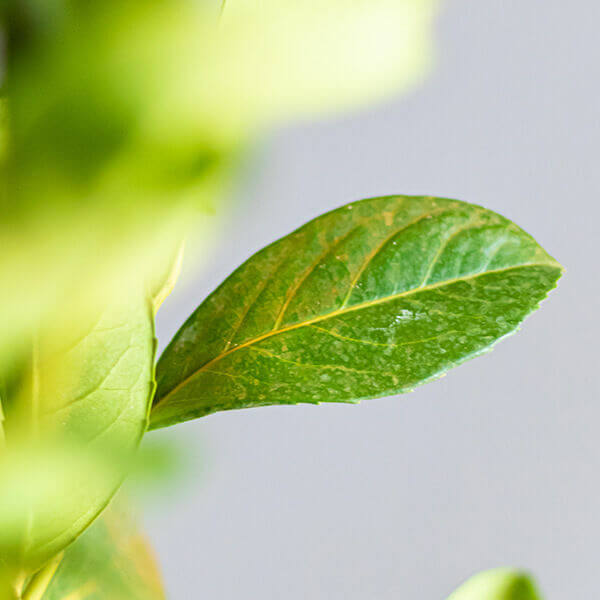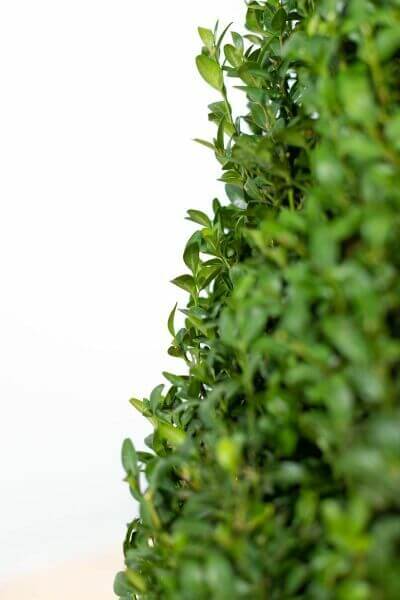Hedge Plants For Community Gardens
Enhance your garden's attraction with lavish hedge ranges such as Yew (Taxus), Thuja, Laurel, Photinia, and Bamboo, commemorated for their structural integrity and ecological benefits.
Yew and Thuja supply evergreen coverage and winter season durability, while Laurel uses fast growth and broad, aromatic leaves.
Photinia adds seasonal appeal with its lively red foliage, and Bamboo lends a low-maintenance, peaceful atmosphere.
These hedges improve air quality, lower noise, and produce tranquil, personal spaces.
Appropriate planting, spacing, and upkeep make sure vigorous growth and eco-friendly harmony.
Check out how these lavish varieties can raise your garden's beauty and well-being.
Secret Takeaways
Transform Your Garden With Lush Hedge Ranges
- Select Yew for its dense, evergreen growth and exceptional longevity.
- Select Laurel for its quick growth and broad leaves, guaranteeing fast personal privacy.
- Select Photinia for its lively seasonal foliage, which turns a striking dark red.
- Utilize Bamboo for a low-maintenance, winter-hardy hedge with visual appeal.
- Space plants 2-3 per meter and prune regularly for ideal development and health.
Popular Hedge Plants
When changing a garden with lavish hedge varieties, it's important to consider popular hedge plants such as Yew, Thuja, Laurel, and Photinia due to their distinct qualities and advantages.
Yew (Taxus) is extremely esteemed for its longevity and dense, green growth, making it a prime choice for enduring landscapes.
Thuja is noted for its evergreen foliage and robust winter season strength.
Photinia includes seasonal vibrancy with red leaves that darken with time, creating vibrant visual appeal.
Laurel uses quick development and fragrant, broad leaves, suitable for quick personal privacy.
In Addition, Bamboo is an exceptional option for atmosphere, providing a low-maintenance, winter-hardy option that enhances the garden's visual with its sophisticated, swaying walking sticks.
These selections accommodate a variety of horticultural requirements and choices.
Benefits of Garden Hedges
Garden hedges offer a plethora of advantages, making them a valuable addition to any landscape. These natural barriers are cost-efficient to carry out and offer significant wind defense, improving air circulation and adding to noise decrease. The dense foliage of hedges like Thuja and Beech ensures personal privacy by obstructing presence, producing a serene and remote environment.
Hedges also play a crucial function in microclimate regulation, supplying a stable environment that cultivates plant growth and minimizes temperature fluctuations. Their complex leaf structures filter pollutants, enhancing air quality and adding to a healthier garden community.
Furthermore, hedges master sound reduction, taking in and deflecting acoustic waves to lower ambient noise levels. This dual performance of offering both acoustic and visual personal privacy enhances the general harmony and visual appeal of any garden.
Planting and Maintenance Tips
For a successful hedge, precise preparation of the planting area is essential. Guarantee the soil has correct pH and drainage to support strong root development.
Space the plants appropriately for the selected species. Water the hedge often during its initial growth phase, adjusting as needed with seasonal changes.
Execute a methodical insect control and illness avoidance strategy, using chemical or natural treatments when necessary. Regularly inspect for aphids, termites, and fungal infections.
Apply mulch to keep wetness and suppress weeds. Seasonal pruning promotes dense growth and air circulation, essential for plant health.
Following these guidelines will assist you cultivate a lively, well-maintained hedge that enhances the beauty of your garden.
Spacing and Trimming Standards
Spacing and Cutting Guidelines
Proper spacing and cutting are vital for cultivating healthy, aesthetically appealing hedges. Adequate spacing ensures each plant gets enough nutrients, light, and air flow.
Follow these standards for ideal hedge maintenance:
- Spacing: Position hedge plants 2-3 plants per meter to encourage robust development.
- Pruning Strategies: Routine pruning is vital for preserving desired hedge height and shape. Cut brand-new growth in summer and cut back older wood throughout winter season.
- Seasonal Care: Adjust cutting methods and schedules according to seasonal requirements to make sure plant health.
- Hedge Height: Routinely monitor and cut to preserve the desired hedge height and accomplish uniform looks.
Adhering to these actions will ensure your hedge prospers, enhancing both the appeal and performance of your garden.
Choosing the Right Hedge
Picking the Right Hedge
Selecting the suitable hedge includes evaluating elements such as fully grown height, foliage density, and environmental durability. Successful hedge plant selection needs comprehending each species' growth attributes and site-specific adaptability.
For example, Yew (Taxus) provides exceptional longevity and dense development, while Thuja is noteworthy Browse this site for its winter resilience. Furthermore, thinking about upkeep requirements is crucial; fast-growing species like Laurel or Privet demand regular trimming, whereas low-maintenance alternatives like Bamboo or Ivy might be more suitable for those seeking very little maintenance.
Ecological elements such as soil type, light availability, and moisture conditions ought to likewise assist the choice process. This careful method guarantees the selected hedges will prosper, offering both visual and functional benefits to the garden landscape.
Shipment and Planting Advice
To guarantee your hedge plants grow, they need to be provided by specialized couriers and planted quickly upon arrival.
Follow these important steps for effective planting:
- Soil Preparation: Improve the soil with raw material to improve drainage and nutrient material.
- Planting Depth: Produce a trench twice the width and equivalent to the depth of the root ball.
- Watering Strategies: Water thoroughly after planting, keeping the soil consistently wet but not saturated.
- Mulching: Use a layer of mulch to keep moisture and reduce weeds.
Customer Assistance and Service
Provided the essential function of timely assistance in horticultural pursuits, our consumer support group is offered six days a week through telephone, e-mail, and social media to use professional advice and quickly address any issues. Their commitment to quick reaction times ensures client satisfaction by fixing queries connected to plant health, optimal planting techniques, and upkeep schedules.

Six days a week
This comprehensive support group, strengthened by a stellar 9.3/ 10 consumer score, highlights our dedication to improving the gardening experience for every customer.
Frequently Asked Concerns
How Long Does It Consider Hedge Plants to Establish?
Hedge plants usually require one to 3 years to become totally established, with the specific duration differing by species and growing conditions.
Reliable care during this important period is vital for robust growth. Consistent watering, alert weed control, and appropriate fertilizer application are critical in promoting strong root advancement.
For example, fast-growing species like Laurel might develop more quickly, while slower-growing ranges such as Yew may take longer. Diligent maintenance speeds up the facility procedure, resulting in dense and healthy hedges.
What Are the Finest Hedge Plants for Privacy?
The question of the finest hedge plants for personal privacy includes evaluating evergreen and deciduous choices.
Evergreen hedges like Thuja, Laurel, and Cypress offer year-round protection, making sure continuous privacy.
In contrast, deciduous hedges such as Beech provide seasonal privacy, shedding leaves in chillier months.
Secret upkeep pointers for personal privacy hedges consist of routine cutting, fertilizing in spring, and correct spacing-- typically 2 to 3 plants per meter.
Additionally, consistent watering and diligent weed removal are crucial for promoting healthy, dense growth.
Can Hedge Plants Attract Wildlife to My Garden?
Yes, hedge plants can attract wildlife to your garden by providing essential benefits like shelter, food, and nesting sites, thereby boosting regional biodiversity. Yew, holly, and laurel are excellent for bring in birds, while ivy supports a variety of insects.
However, it is essential to note that there are some drawbacks, such as increased upkeep to handle insects and regular maintenance. Thoroughly choosing and maintaining hedge ranges can assist balance these benefits and downsides, eventually promoting a dynamic and sustainable environment in your garden.
Are There Any Flowering Hedge Plants Available?
Yes, there are flowering hedge plants readily available that can improve the beauty of your garden.
For instance, Elaeagnus, also called Olive Willow, produces aromatic white flowers in the fall, adding a touch of sophistication.
Photinia, another popular choice, showcases lively red leaves that mature into an abundant green, creating a vibrant visual effect throughout the seasons.
To guarantee these plants thrive, it's vital to practice proper pruning methods and seasonal upkeep, such as trimming brand-new development in the summertime and cutting down in the winter.
These steps will assist keep the health and aesthetic appeal of your blooming hedges.
How Do I Avoid Pests in My Hedge Plants?
To prevent insects in hedge plants, use natural pest control techniques and keep proper hedge care. Introduce useful pests like ladybugs, which prey on harmful insects, to produce a well balanced ecosystem.
Regularly check your hedges for indications of problem and quickly eliminate any afflicted parts to avoid the spread. Ensure the health of your hedges by applying balanced fertilizers and providing sufficient water.
Use mulching to keep soil wetness and appropriate spacing to minimize plant tension and promote robust development. These practices collectively help in lessening insect problems and preserving a healthy hedge.
Conclusion
In essence, selecting the right hedge varieties such as Yew, Thuja, and Laurel can transform any garden into a tranquil sanctuary. These plants supply year-round plant, improve aesthetic appeal, and offer useful advantages like sound reduction and wind protection.
Proper planting strategies, precise spacing, consistent watering, and seasonal trimming are essential for optimum growth.
Trustworthy delivery services and expert consumer assistance guarantee a seamless experience from purchase to planting, making it easier than ever to elevate your outside area.
Garden hedges offer a multitude of advantages, making them an important addition to any landscape. These natural barriers are affordable to execute and provide substantial wind security, improving air circulation and contributing to sound reduction. The thick foliage of hedges like Thuja and Beech guarantees privacy by blocking exposure, developing a peaceful and secluded environment.

Pruning Methods: Regular pruning is important for maintaining desired hedge height and shape. Trim brand-new development in summertime and cut back older wood during winter season.